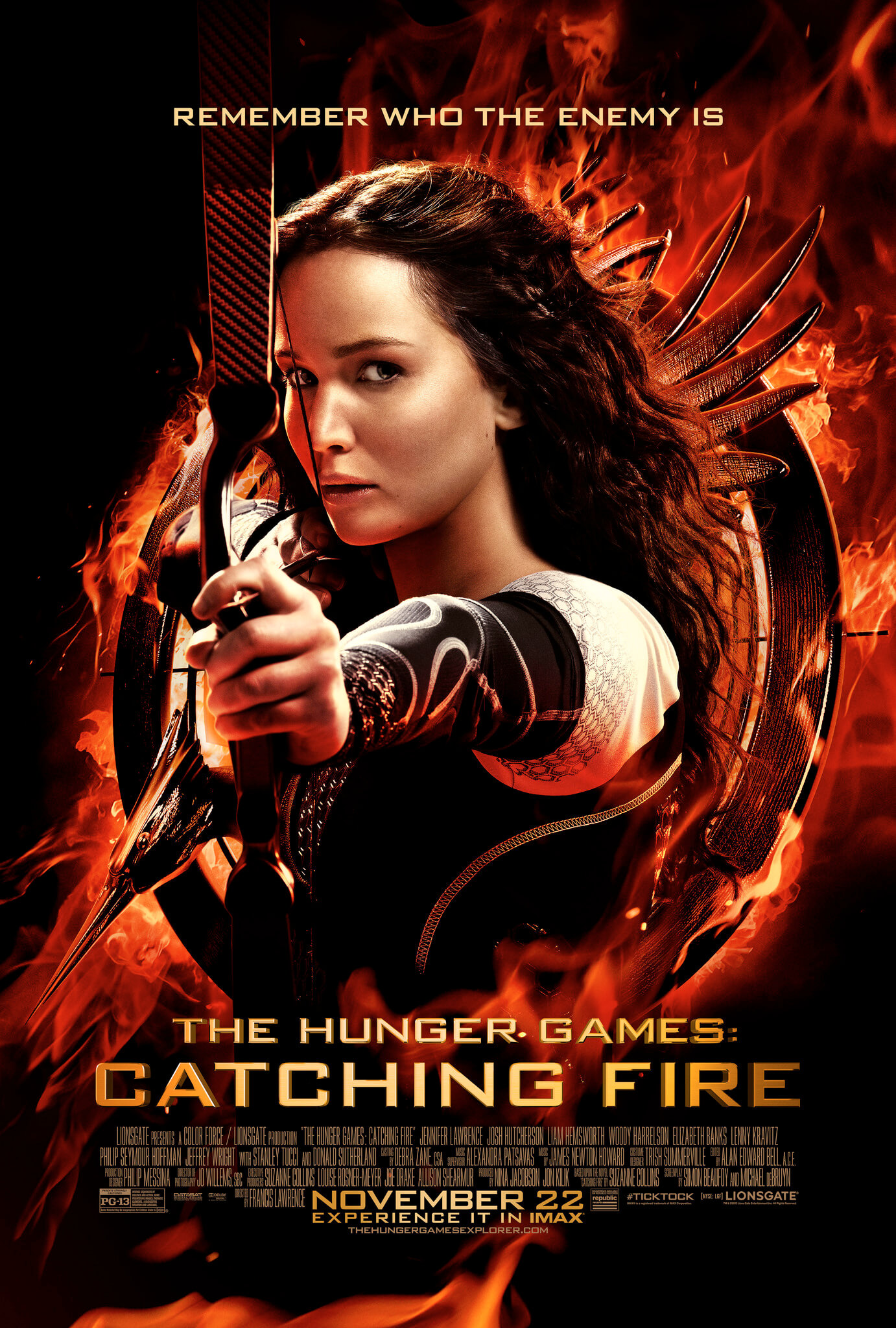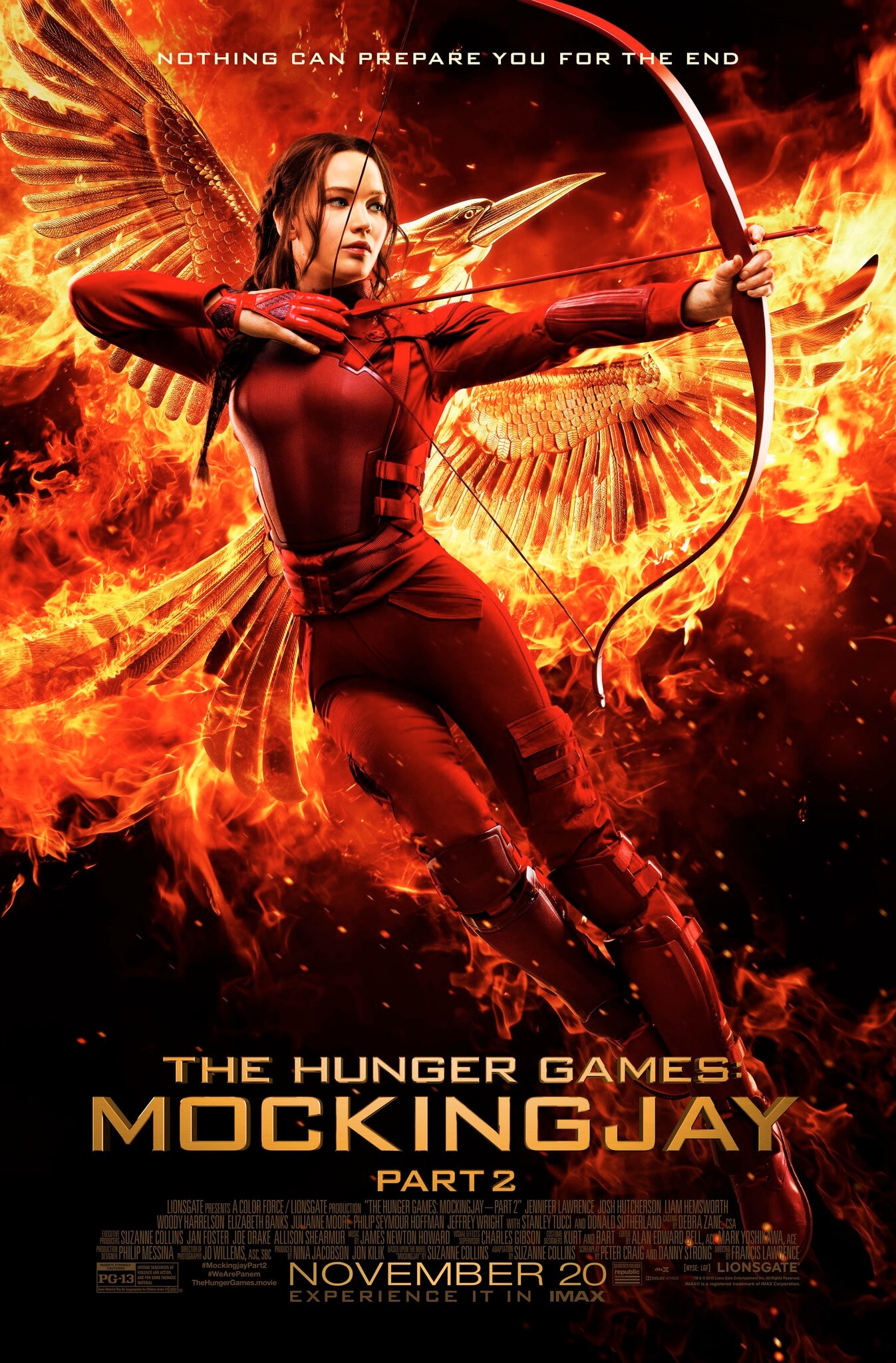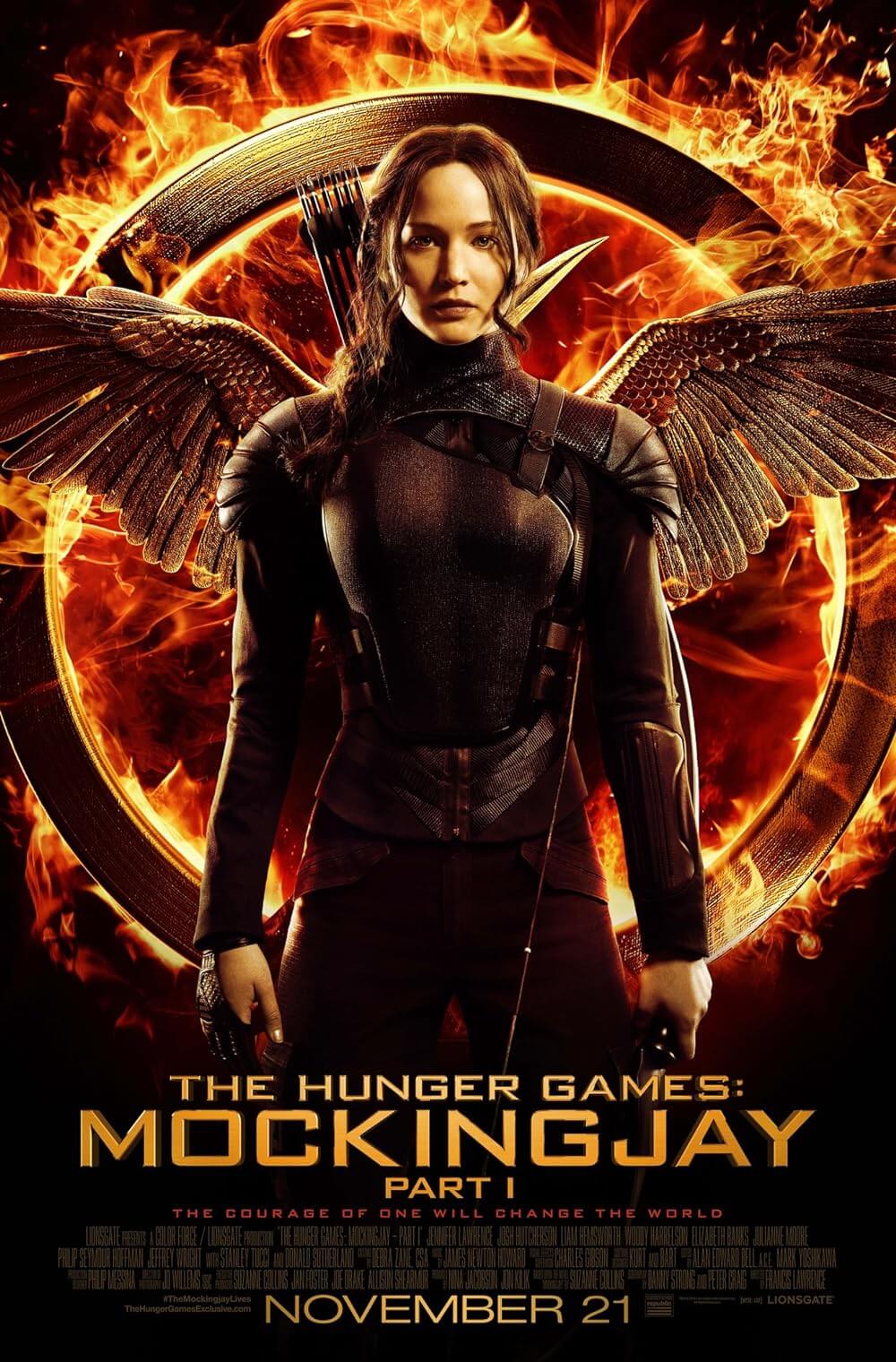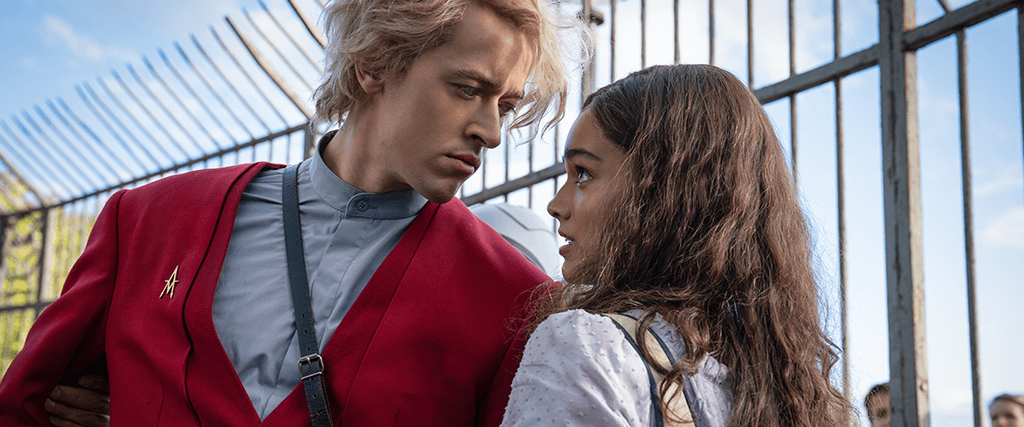
The Hunger Games: The Ballad of Songbirds & Snakes
By Brian Eggert |
A prequel to Suzanne Collins’ dystopian young adult series, The Hunger Games: The Ballad of Songbirds & Snakes tackles her 2020 novel and, like the other book-to-film adaptations of her work, the result is solid franchise entertainment that has more of an edge than other material of this kind. The first scene, for instance, shows child survivors of the Capital’s war with the Districts of Panem witnessing a desperately starving man resort to cannibalism. That’s a stark, horrific image, and the sight of children scrambling in the ruins of a war-torn city cannot help but unintentionally evoke children orphaned by the current Israeli-Palestinian conflict. But then, the films based on Collins’ books have constantly challenged audiences despite their PG-13 rating. Reading about children killing each other in a government-sponsored tournament to the death is one thing; seeing it projected onscreen is another. To whatever extent one might accuse Collins of borrowing her ideas from Stephen King’s The Running Man and The Long Walk (as Richard Bachman), Kinji Fukasaku’s Battle Royale (2000), and reality TV’s Survivor, her efforts produced films that remain among the few YA adaptations with a bold perspective and disturbing extremity. Though it arrives eight years after the last entry, The Ballad of Songbirds & Snakes continues that standard.
Following the instant success of the Harry Potter franchise, every studio scrambled to develop its own long-running movie series that could last for years and ensure consistent returns over several sequels. For every Twilight or Maze Runner series that continued to generate profits, many more failed to live beyond the first installment (see I Am Number Four, Eragon, The Golden Compass, et al.), some were canceled before they wrapped up the story (the Divergent series), and even fewer had anything to say. Lionsgate’s The Hunger Games movies became the best of this short-lived craze. Not only do they faithfully adapt Collins’ stories to the screen, but they also follow the tenets of dystopian science fiction by commenting on society and offering a cultural critique about power, entertainment, and control. Besides popularizing Jennifer Lawrence in one of her finest roles, they also made excellent use of their established cast members—with names such as Woody Harrelson, Elizabeth Banks, Julianne Moore, Stanley Tucci, and Philip Seymour Hoffman turning in genuinely strong performances, whereas the well-known actors in other teen fare often seem to show up for the paycheck alone.
The largely unknown Tom Blyth takes on the role of Coriolanus Snow in this origin story about the future President of Panem (played by Donald Sutherland in the other films), who becomes the annual Hunger Games’ biggest advocate. The story begins with the eighteen-year-old Aryan poster boy Snow feigning prosperity at the postwar Capital, his parents dead, his once-prosperous home reduced to shambles, and his future at university dependent on winning the Plinth Prize—a scholarship funded by the arms-dealing father of a fellow student, Sejanus (Josh Andrés Rivera). But as ever in Collins’ world, the leaders introduce a wrinkle this year. The Dean of the Academy, the weary-eyed and morphling-addicted Professor Highbottom (Peter Dinklage), announces that the prize will be awarded not to the student with the best grades, as usual, but to the student who best showcases their tribute as a mentor in the 10th Annual Hunger Games. Snow is assigned a small-statured but fiery girl from District 12, Lucy Gray (Rachel Zegler), whose presence at the reaping finds her dispatching a snake on a snide enemy and then singing a defiant song to the cameras. “Corio,” as he is known, couldn’t have asked for a better tribute to move viewers.
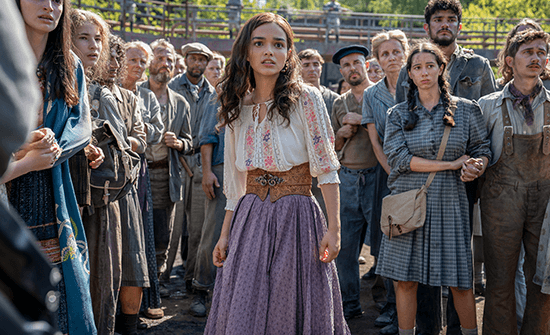 The relationship between Snow and Lucy Gray develops out of necessity and then something approaching love. Of course, knowing how Snow turns out later, the story is doom-laden from the beginning. What’s left are the finer details, including head gamemaker Dr. Gaul, whom Viola Davis plays with twisted glee, stealing every scene with a maddened look in her eye and an insidious scheme behind her smile. Zegler is also quite good in her Loretta Lynn-esque character, performing songs from her nomadic Covey group in a rich, bluesy, Southern-twanged voice—no doubt having landed the role after starring in Steven Spielberg’s 2021 remake of West Side Story. If the star power and sheer acting chops feel somewhat muted next to the earlier films, with the absence of a primal force like the young Jennifer Lawrence achingly missing, the new cast builds out Collins’ world effectively enough. Production designer Uli Hanisch creates a world that looks retrofuturist. Characters write with ink and paper, communicate on clunky videophones, and ride on rusty train cars. This is a fascinatingly detailed world coming out of a devastating conflict, and though grim, being there instantly makes the viewer want to put on The Hunger Games afterward.
The relationship between Snow and Lucy Gray develops out of necessity and then something approaching love. Of course, knowing how Snow turns out later, the story is doom-laden from the beginning. What’s left are the finer details, including head gamemaker Dr. Gaul, whom Viola Davis plays with twisted glee, stealing every scene with a maddened look in her eye and an insidious scheme behind her smile. Zegler is also quite good in her Loretta Lynn-esque character, performing songs from her nomadic Covey group in a rich, bluesy, Southern-twanged voice—no doubt having landed the role after starring in Steven Spielberg’s 2021 remake of West Side Story. If the star power and sheer acting chops feel somewhat muted next to the earlier films, with the absence of a primal force like the young Jennifer Lawrence achingly missing, the new cast builds out Collins’ world effectively enough. Production designer Uli Hanisch creates a world that looks retrofuturist. Characters write with ink and paper, communicate on clunky videophones, and ride on rusty train cars. This is a fascinatingly detailed world coming out of a devastating conflict, and though grim, being there instantly makes the viewer want to put on The Hunger Games afterward.
Broken into three chapters over the course of 157 minutes, the prequel adopts an unconventional structure compared to the other Hunger Games stories. The whole film doesn’t revolve around the tournament, as the 2012 original and Catching Fire (2013) did. That may present a narrative surprise for viewers not versed in the book or expecting an identical plotline; it may also make the film seem long or anticlimactic in its final third, which takes place after the year’s Hunger Games event has ended. However, Collins’ narrative isn’t so much about the contest as how it’s developed into a better political weapon, and how Snow proves adept at reengineering that weapon to maximize its effectiveness. And while the screenplay by Michael Lesslie and Michael Arndt includes all the book’s plot details that build to Snow’s eventual rise to power, the difference in mediums leaves some of the finer details for the reader to discover. For instance, Collins’ prose takes us inside Snow’s mental processes and reasoning more than a film could (without using voiceover). Some of Snow’s moral justifications and motivations—hunger, comfort, and ambition being the most immediate in his mind—better build the character into a self-interested monster in the text, but that’s to be expected.
Other variations on the text prove wise. The writers justly omitted Gaul’s tendency to use nursery rhyme lingo in the book (her silly “hippity-hoppity” refrain is a constant source of annoyance). The film also makes additions, such as building out flashy host Lucky Flickerman (Jason Schwartzman) into a more substantial comic relief role, which the actor delivers with mordant humor and absurdist details during the games. Returning as director after the last three of the four movies from the 2010s, Francis Lawrence reteams with cinematographer Jo Willems for a production that cost a reported $30-60 million less than his other contributions. The relatively smaller budget reflects how the demand for YA movies has diminished in recent years, but it’s also visible onscreen. The opening shots of a wartorn Panem look like a phony digital landscape; so, too, does the crumbling arena, with plumes of CGI dust that would have been cheap-looking a decade or two ago. In 2023, studios have become increasingly lazy with their computer-generated effects, leaving productions such as Ant-Man and the Wasp: Quantumania and The Flash to look uncharacteristically substandard. Fortunately, the Hunger Games prequel is a mostly grounded affair with few instances of second-rate production value.
To be sure, The Ballad of Songbirds & Snakes reminds us that the Hunger Games franchise is one of the best, most thoughtful of all YA franchises. It’s capably directed, faithfully adapted, and features some brilliant performances from Davis, Schwartzman, and Dinklage. Blyth and Zegler also have chemistry in their scenes together, and they convincingly portray the gradual fissures that lead to their fates. Longtime fans and newcomers alike will find much to enjoy here, even if, as ever, the book is a superior experience. Maybe it’s the postwar setting, the omnipresence of children dying in the headlines today, or the rise of oppressive and extreme governments in the years since the first Hunger Games movies, but this prequel feels more in conversation with our world than its predecessors. That’s both a chilling reality and an indicator that Collins has tapped into something more than sparkly vampires or the wizarding world ever could. It is a quality that makes this Hollywood tentpole, which is both a commercial behemoth and ever-critical of systems of control, go down a little smoother.

Unlock More from Deep Focus Review
To keep Deep Focus Review independent, I rely on the generous support of readers like you. By joining our Patreon community or making a one-time donation, you’ll help cover site maintenance and research materials so I can focus on creating more movie reviews and critical analysis. Patrons receive early access to reviews and essays, plus a closer connection to a community of fellow film lovers. If you value my work, please consider supporting DFR on Patreon or show your support in other ways.
Thank you for your readership!
Brian Eggert | Critic, Founder
Deep Focus Review


